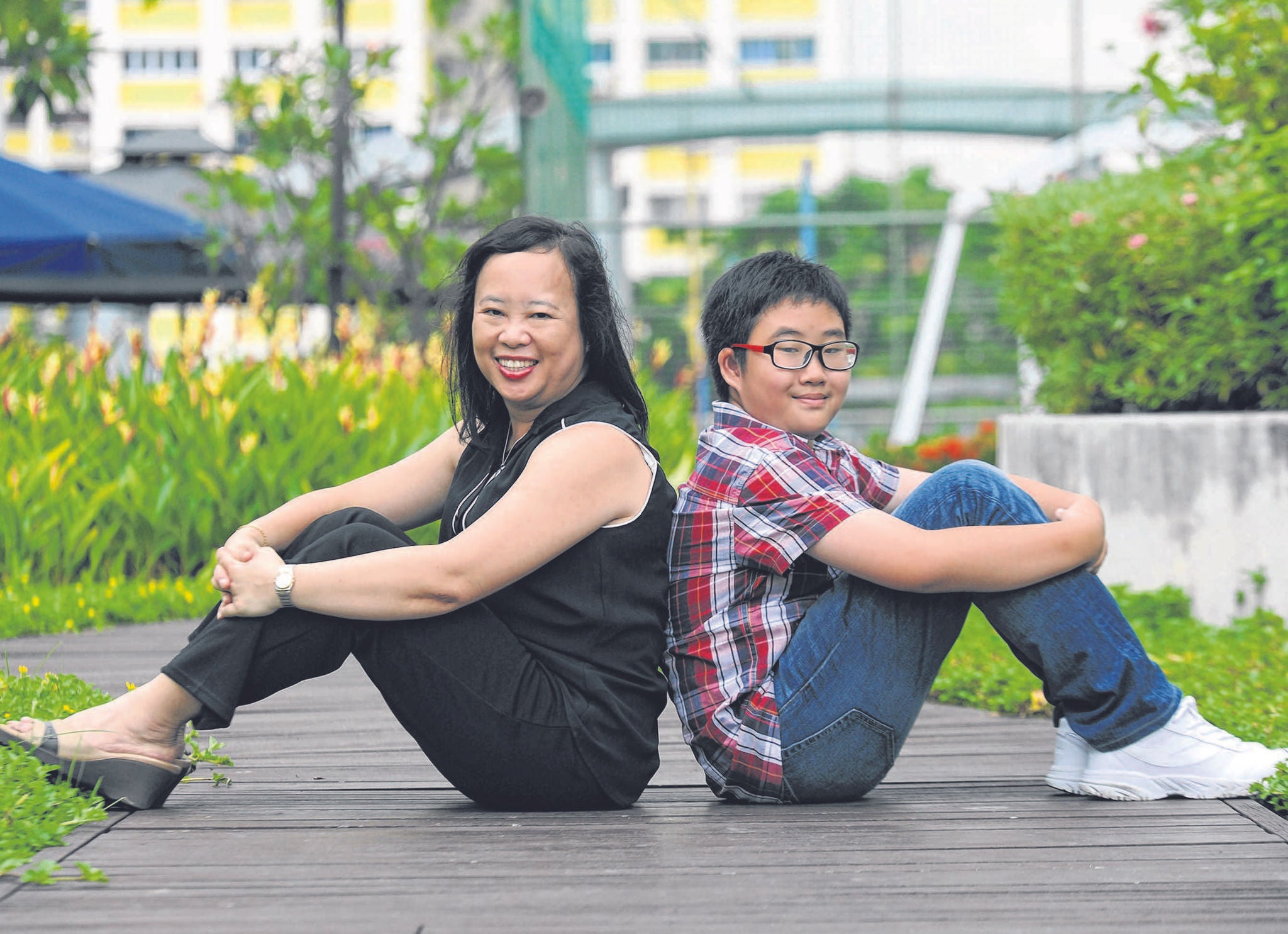
his myopia has stabilised at 300 degrees. Twelve-year-old Timothy Neo (far right) enjoys reading small-print books and is short- sighted, but his 14-year-old sister Isabelle (right) does not have the same interest and has perfect eyesight. After attending the structured parks programme, Timothy spent more time outdoors and his myopia has stabilised at 500 degrees. PHOTOS: TIFFANY GOH, CATHERINE CHUAH
Parents are urging their children to spend more time outdoors as some studies show that it may slow down the degree of myopia
Singapore has one of the highest rates of myopia in the world and parents are struggling to get their children to embrace a more outdoorsy lifestyle for better eyesight.
It is now widely accepted among experts that children who spend more time outdoors are less likely to be short-sighted. Some studies also show that spending time outdoors may slow down the march of myopia in children who are already myopic.
Despite this, taking to the outdoors more often appears to be an uphill battle for Singaporean children and their families, even when they know of the benefits.
A study by the National University of Singapore and Singapore Eye Research Institute recruited 285 Singaporean children aged six to 12 and assigned them to either continue with their usual weekend activity or go for a structured outdoor programme.
Under the programme, the children and their families were invited to a two- to three-hour guided walk to parks and nature reserves every weekend over a period of nine months. There was a drop of interest in park visits, with the monthly attendance rate plunging from 43 per cent in May 2011 to 6.6 per cent in February 2012.
Studies in recent years in the United States and Australia show that children who spend at least 21 hours a week outdoors, or about three hours a day, cut the risk of suffering from myopia by up to 20 per cent. Scientists believe that high levels of light stimulates the retina (back of the eye) to release a chemical called dopamine which stops the eyeball from lengthening.
But some parents and children in Singapore find it hard to meet this target. Ms Coleen Lee has three children, aged 17, 14 and 12, who have been myopic since they were in lower primary school.
The 46-year-old administration manager says: “When they were younger, my husband and I took them outdoors only on weekends because we had to work on weekdays.”
When her two older children entered secondary school, schoolwork took over and they could not afford to spend a lot of time outdoors, even on weekends.
Says Ms Lee: “They usually spend their weekends indoors trying to finish up whatever schoolwork they cannot complete on weekdays.”
Her youngest son, Julian, who is 12 and an avid reader, has more time to bask in the sun, but prefers to spend his time indoors reading. After attending the structured parks programme, however, he has started to join her for a jog or walk once every two to three weeks.
Although the time outdoors is limited, Ms Lee feels that it has helped stabilise Julian’s myopia, which is now about 300 degrees.
On the other hand, housewife Catherine Chuah, 42, says that as she was not working, it was possible for her to take her children out to the playground and parks for about two to three hours every day when they were younger. But when her son was in kindergarten, he developed the habit of reading small-print books such as encyclopaedias and preferred to spend more time indoors.
She believes that this was why he developed myopia at the end of Primary 1. Her daughter, 14, who does not have this habit, has perfect eyesight.
After attending the structured parks programme and realising that it helped with his myopia, her son, who is now 12, spends about 1½ hours every day playing games such as soccer and frisbee with his classmates. His myopia has stabilised at about 500 degrees.
Indeed, the NUS study’s main investigator, Professor Saw Seang Mei from the NUS Saw Swee Hock School of Public Health, says that a multi-pronged approach is needed to sustain children’s liking for outdoor life.
Prof Saw, who is also the head of Myopia Unit at the Singapore Eye Research Institute, says: “There should be a comprehensive programme which can include park visits, outdoor CCAs in schools, outdoor programmes in the community and even an outdoor gadget to help monitor the time spent outdoors.”
In Singapore, a quarter of the children become short-sighted by age seven and half by age 10.
Prof Saw says there is a need for early intervention as children who develop myopia at a very young age are more likely to become blind later in adult life, due to diseases such as myopic macular degeneration. The myopia rate among seven-year-old Chinese Singaporeans is 28 per cent, while that of Chinese children in Sydney, Australia, of a similar age is 3.3 per cent.
Experts believe that this is largely due to the difference in time spent outdoors between the two groups – about 14 hours a week in Sydney, compared to three hours a week in Singapore.
However, another parent, 40-year-old teacher Ravi Ravindran feels that outdoor time does not play a major role in the myopic condition of her two younger daughters, aged aged 11 and 10. They have been myopic since they were in lower primary school.
Thanks to schoolwork and enrichment programmes, they spend only about eight hours a week outdoors, swimming and playing games such as badminton.
Says Mrs Ravindran: “My oldest daughter, who is 14, has perfect eyesight even though she spends more time indoors than her two younger sisters. So I feel that genes have a bigger role to play in the development of myopia in my two younger girls.”
Contributed by

English
The-Sunday-Times- Go outdoors for better eyesight.pdf














 Get it on Google Play
Get it on Google Play